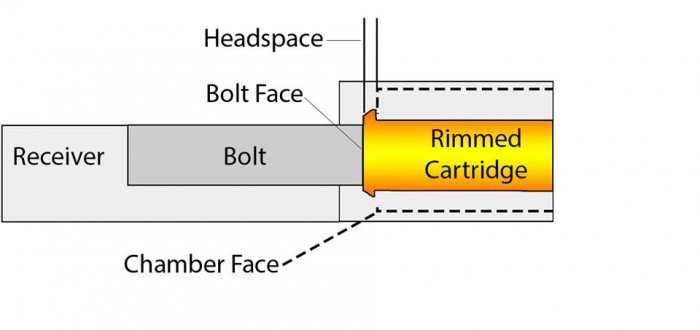Armament Research Services has released its latest Research Note, authored by ARES Technical Specialist Jonathan Ferguson. Research Note 7 gives an overview of the concept of cartridge headspace (CHS), and its importance in the correct functioning of a firearm. ARES Research Notes are short form publications, designed to provide brief, accurate information on a single topic or concept. Below are some excerpts from the full note, which can be read here.
‘Headspace’, sometimes termed ‘Cartridge Head Space’ or ‘Cartridge Headspace’ (CHS), is the distance from the face of the closed breech of a firearm to the surface in the chamber on which the cartridge case seats. This point usually corresponds to the rim or shoulder of the cartridge case, and varies depending upon the type of cartridge being chambered.
…
Due to the high pressures involved, precise measurement and setting of CHS is crucial to the safe and reliable operation of a firearm. Insufficient headspace will hinder or prevent the chambering of a round. A certain amount of play or ‘head clearance’ is required to account for variance in ammunition production and fouling of the working parts during normal operation.
…
Traditionally, headspace is measured using the rim of a cartridge, in which case the weapon’s headspace measurement consists of the rim itself, plus any excess gap between case head and bolt face. Head clearance in this instance therefore comprises the headspace measurement minus the thickness of the cartridge rim.
A good example of incorrect headspacing and its effects comes from ARES Director N.R. Jenzen-Jones’ Following the Headstamp Trail, published by the Small Arms Survey last year.
“…the use of the .308 Winchester cartridge in firearms chambered for 7.62×51 mm might have adverse effects on the firearms themselves, due to the slightly longer headspace present in weapons chambered for 7.62×51 mm. The cartridges may also suffer case failures when fired from such weapons, including rupturing of the case walls or separation of the case head.”
Read the full content of ARES Research Note 7: Cartridge Headspace. Other ARES publications can be found here.



3 thoughts on “ARES Research Note 7: Cartridge Headspace”